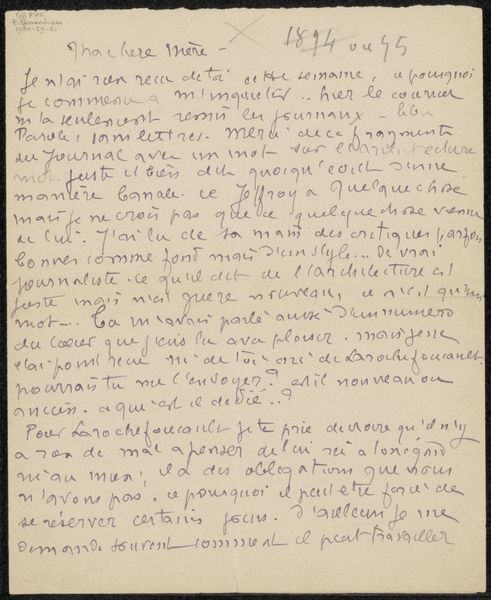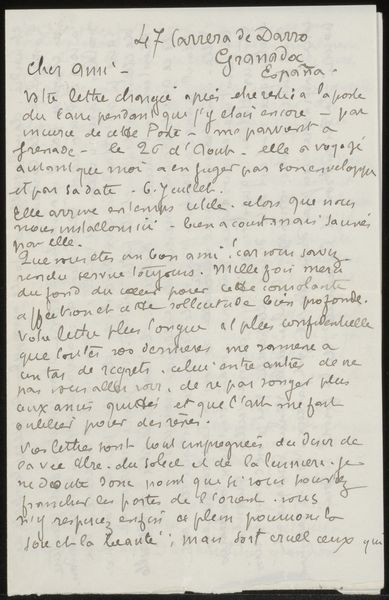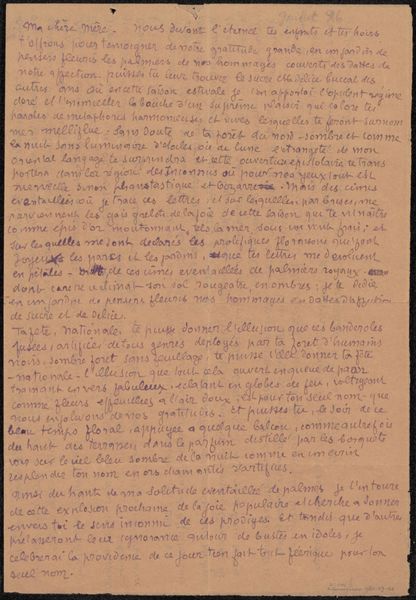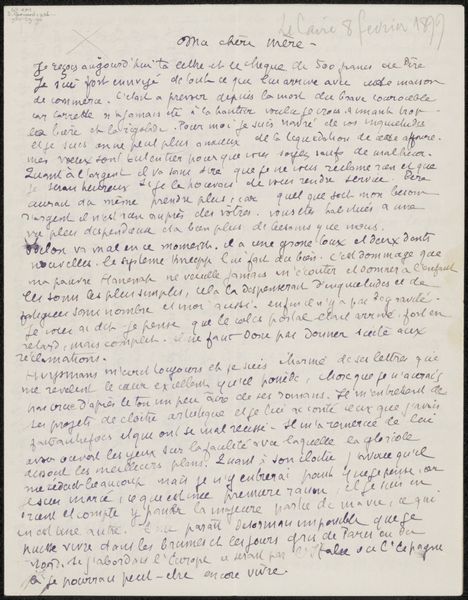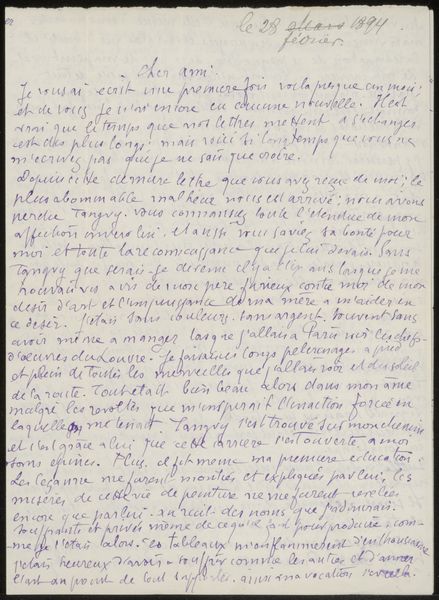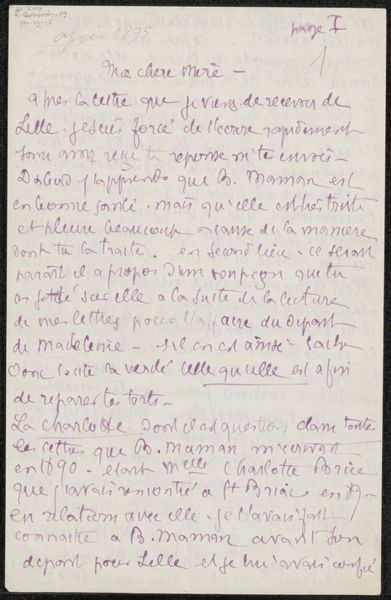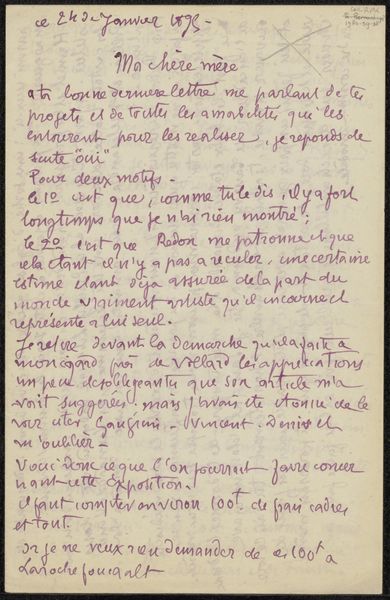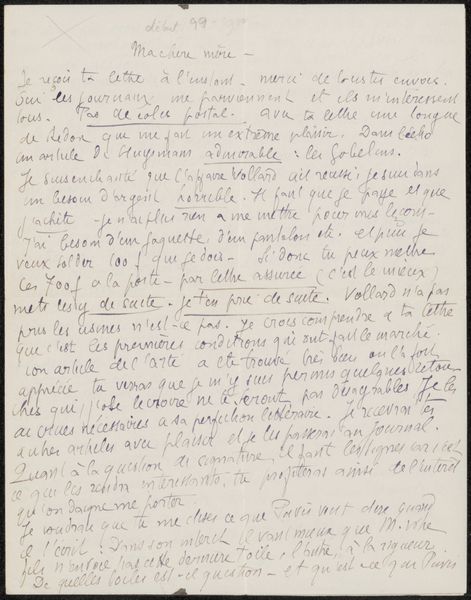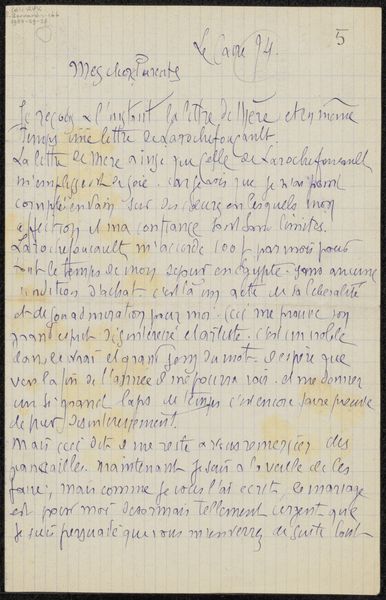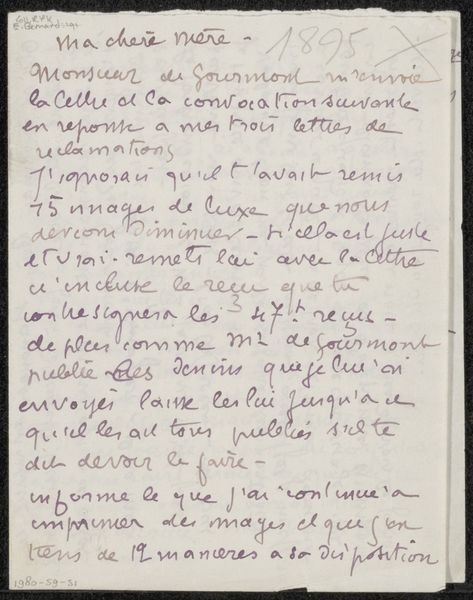
drawing, paper, pen
#
drawing
#
hand drawn type
#
paper
#
personal sketchbook
#
hand-drawn typeface
#
calligraphic
#
pen work
#
pen
#
sketchbook art
#
calligraphy
Copyright: Rijks Museum: Open Domain
Editor: This is "Brief aan Héloïse Bernard-Bodin," a drawing made with pen on paper, sometime between 1878 and 1941, by Emile Bernard. It feels very personal and immediate, like we're reading someone's private thoughts. How would you interpret this work? Curator: It's tempting to view this solely as a window into Bernard’s mind, but let’s consider its materiality and its function within the broader artistic landscape. The pen and paper – these are readily available, democratic tools. Why would Bernard choose this medium over, say, oil paints for this particular piece of correspondence? Editor: Perhaps it was about speed and practicality? Easier to jot down thoughts than setting up an easel. Curator: Precisely. But what does that immediacy and ease suggest about Bernard's relationship to his work and the market? It is literally a letter. Could we examine how he is relating artistic labor and his own production with ideas of commerce and social capital? Editor: So, it's less about the artistic content and more about how it reflects his means of making and his potential economic considerations? Curator: Exactly. Think about the paper itself - its texture, its potential for mass production. How does this humble material connect to broader questions about accessibility and the democratisation of art? Editor: That’s fascinating! I hadn't considered how the choice of materials and form factors into how we understand the economics of his creative choices. Curator: By understanding the materials, we can also then trace back into that social-economic construct and ask questions about its origin, the suppliers, the distribution lines, and finally what all that mean to the final viewer who engages with the work. Editor: I now appreciate that there’s a dialogue happening here - between the artist, the materials, and the larger context. Thank you.
Comments
No comments
Be the first to comment and join the conversation on the ultimate creative platform.

